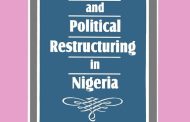The military took control of Agatu area which has been the theatre of violence since yesterday morning. Eye witnesses confirmed seeing a convoy of soldiers, police and other security personnels heading for Okokolo which, for now, is the epicentre of the violence. They said the convoy was led by the Task Force Commander, a Major-General whose name was, however, not given.
Earlier today, confusion remained about how many people might have died. Some headlines suggested nine. While that may not be in doubt, there is no clarity anymore about whether the first two casualties are two airmen and if it is true one of them did not die after all but surfaced at a place called Ocholonya.
In a very fluid situation as might be unfolding in a predominantly rural and diffuse settlement as Agatu, it is difficult to confirm anything authoritatively. But Intervention is right in its original speculation that contestation over use of land is the trigger of this cycle of violence, exactly as it was around this same time in 2016.
The violence broke out early yesterday (Thursday) characterised by sporadic shooting across river Ochekwu (Ogbeyi G’okpa G’echo) by a set of combatants advancing towards Okokolo main town. The gun attacks led to complete desertion of the areas by women and children.
Herders and farmers are all key actors in agriculture but the agricultural processes of each has not been organised in such a manner that there would be no conflict between their land use practices. Agatu is served by a large stretch of land that is wet all – year round and attractive to both herders and farmers.
Violence in Agatu adds up to Nigeria’s growing list of sources of generalised insecurity associated with kidnapping, banditry, terrorism, Plateau killings, Southern Kaduna killings, bunkering and illegal refineries, Zamfara killings, vengeance violence, domestic violence, corruption, illegal mining, violent cum criminal capitalism, road accidents, cultism, ethno-religious and regional enemy images, amongst others.




























